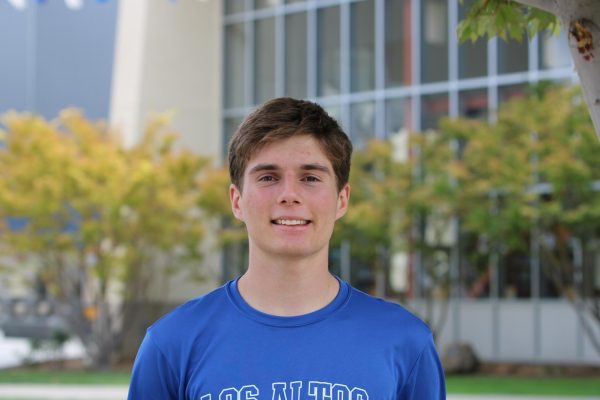Erica Raine: A journey in aerospace
Erica Raine at the Kennedy Space Center for the original rollout of Space Launch System (SLS) this past March.
Erica Raine has worked with rockets for 18 years. She is a Senior Program Manager at Aerojet Rocketdyne who is overseeing the team building the rocket thrusters for Orion, the spacecraft being used by NASA in the Artemis missions to send astronauts around and to the moon in the coming few years. Oh, and she also happens to be English and Theater teacher Lisa Battle’s sister-in-law.
“I’m in program management. We’re the people responsible for making sure the customer is happy,” Raine said.
In this case, the customer is Lockheed Martin, the manufacturer making the Orion capsule.
“We have a contract with Lockheed,” Raine said. “But NASA attends all of the meetings. They want to make sure that what we build meets all their requirements, and that it’s safe and reliable.”
Raine has been working on the Artemis program since 2012, when she started as an engineer. Her team is specifically building the smaller Reaction Control System (RCS) thrusters, which help with maneuvering and changing the orientation of the Orion crew capsule and service module. After the rockets are built by Aerojet, they are sold to Lockheed Martin and the European Space Agency, who use their thrusters and parts from hundreds of manufacturers to fully complete the Orion Capsule.
“Communication is really important,” Raine said. “We’re running really big teams and we’re running multinational teams, so we have to do a lot of listening and communicating our meaning. It’s challenging, but really fun.”
Raine’s first direct experience with rockets was when she was studying at the University of Colorado, where she did a project on hybrid-propellant rockets. However, her curiosity for space and spaceflight started when she was just a kid.
“I’ve always been interested in space, and the great American space story,” Raine said. “You know, it’s a big, heroic, tale. I originally wanted to be an astronaut.”
After she graduated with a degree in Aerospace Engineering, the first job she landed was at Alliant Techsystems, an aerospace company now part of Northrop Grumman, where she worked on the solid fuel boosters for the Space Shuttle program.
“It was totally different from what I do now,” Raine said. “Those rockets were huge, they’re 12 feet in diameter. We got to climb in them when they were fully loaded. It was an interesting experience.”
Working on the tail end of the almost 40 year long Space Shuttle program gave Raine an opportunity to learn from older engineers with decades of experience. Some of these engineers were working on the program during the 1986 Challenger accident, where a malfunction of the solid fuel boosters led to the rocket and shuttle exploding and all aboard getting killed.
“They talked a lot about how serious space is, and how important every decision and the quality of your work is,” Raine said. “It was sobering, but I was honored to work with the people who rebuilt the space shuttle program after it. Everyone took responsibility to never have it happen again.”
Raine’s commitment to quality and safety led to her receiving the Silver Snoopy Award, an award that has flown in space and is presented by astronauts to NASA employees who have significantly contributed to the success and safety of a manned mission.
There won’t be any astronauts aboard Artemis 1, but the thrusters that Raine and her team have been designing and making will be used on all of the Artemis missions using Orion. Artemis 1 is also the first launch for the SLS, which was originally mandated by congress to be launched in 2016.
“Artemis 1 is a big thing for NASA because we really need to launch this rocket,” Raine said. “It’s late. It needs to get going.”
However, since Artemis 1 is more of a test for the SLS and for the Orion capsule, Raine believes that the legacy of the program lies in the future.
“Its legacy is going to depend on the later missions,” Raine said. “Artemis 2, sending a crew around the moon. Artemis 3, landing on the moon. Artemis 4, establishing a space station orbiting the moon.”
Artemis 1 was delayed 3 times before finally launching on Wednesday at 1:47 am EST (late Tuesday for the west coast). Leading up to the launch, Raine already knew exactly who she wanted to be watching it with.
“My coworkers—my team,” Raine said. “I can’t think of a better way to watch it than with the team that built it. The people who know what it really took: the late nights, the long weekends. Maybe the kids can come, but I really want to watch it with my coworkers.”
Though Raine got into aerospace as an engineer, she believes that now is a great time to be looking into aerospace for many different interests and careers.
“These are big companies,” Raine said. “They’ve got room for all kinds of skills. Aerospace has been really welcoming, and there’s so much opportunity right now.”




